 |
|
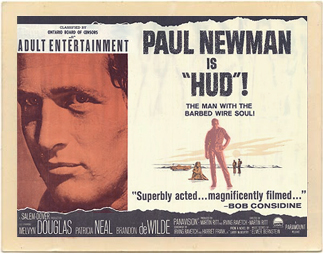 Hud Hud1963. Paramount Pictures, Black & White, Aspect Ratio 2.35 : 1, 112 minutes, Not Rated Release Date: May 29, 1963 Hud is available at Amazon.com on DVD and VHS. Movie Synopsis: A classic character study of Hud Bannon, a ruthless young rancher without a heart, who abuses and eventually alienates everyone in his “big fish in a little pond” Texas Panhandle world. Cast: Paul Newman, Melvin Douglas, Patricia Neal, Brandon de Wilde, Whit Bissell Director: Martin Ritt Thoughts on the Movie: This is without a doubt my favorite movie of all time (tied with another Paul Newman flick, Paris Blues) and Paul Newman is my all-time favorite actor. No Doubt About It. End Of Story. So There. But, seriously... this film is simply hypnotic, with its sad, mundane reality so out in the open for everyone to see. These people think this is the way life is, and I guess for them, that’s true. I had some somewhat distant relatives (who lived in small Oklahoma towns) who were sort of like these folks, and maybe that’s why it touches me the way it does: a strange chill mixed with a warm, cozy feeling about something that does, indeed, seem oddly familiar. As for the lead character of “Hud,” played to perfection by Newman, all anyone can say is: what a cad! But, what a charming, handsome, and completely swaggeringly seductive cad. I’d like to know who could resist him... oh, wait a minute: in real life I’d get as far away from this monster as possible, no fooling. But, God, what movie magic this whole mess makes. This is definitely a film where they got it completely right, including the ending. What a triumph! Paul Newman is “Hud!” ~Jean 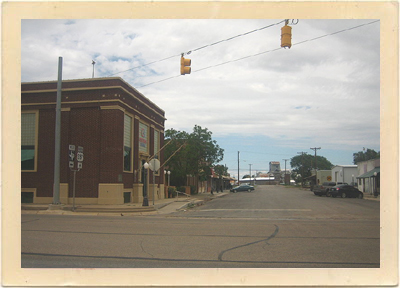 Location Site: Location Site:Claude, Texas (see Map) Most of Hud was filmed in and around the tiny town of Claude. The sleepy Texas Panhandle town was the perfect backdrop in which to tell the common, yet tragic, story of the Bannon family. This movie, which was beautfully filmed in black and white, perfectly captured the banality of the humdrum, dead-end feeling of a small Texas town and the personal dramas of its inhabitants in the early 1960s. Right: This building served as the Greyhound Bus Station where two pivotal scenes in the movie “Hud” took place: in the dark of a lonely night, Alma (Patricia Neal) said her goodbyes to both Lonnie (Brandon de Wilde) and Hud (Paul Newman). About Claude, Texas: Claude, Texas (population 1,313; elevation 3,406 feet; 35° 6’ 27” N, 101° 21’ 51” W) is located about 28 miles east of Amarillo, on US 287 in the south Texas Panhandle. Claude was originally named Armstrong City after several area ranches named Armstrong. The name, however, was changed to Claude in 1887. Claude Ayers, the engineer of the Fort Worth and Denver Railway (the first train to travel through the area), requested that the town be named in his honor. 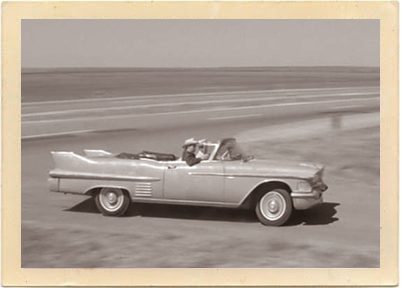 During the 1890s, the town grew as a cattle-shipping point, with several stores, two saloons, two blacksmith shops, a livery stable, four churches, a bank, and a resident physician. J.M. White built the ornate, three-story Palace Hotel, which at that time was the largest in the Texas Panhandle. W.S. Decker established a weekly newspaper, the “Claude Argus,” which later merged with the “Goodnight News” to become the “Claude News.” During the 1890s, the town grew as a cattle-shipping point, with several stores, two saloons, two blacksmith shops, a livery stable, four churches, a bank, and a resident physician. J.M. White built the ornate, three-story Palace Hotel, which at that time was the largest in the Texas Panhandle. W.S. Decker established a weekly newspaper, the “Claude Argus,” which later merged with the “Goodnight News” to become the “Claude News.”Left: Paul Newman and Brandon de Wilde arrive back on the ranch in Hud’s speeding Cadillac in the award-winning 1963 drama, “Hud.” Before modern water and sewage systems, Claude’s residents went to the courthouse square for water at the public trough, which was shaded by a cottonwood tree. One early resident recalled that the old wooden courthouse “always smelled of tobacco and disinfectant.” After 1900, Claude was incorporated. The town got its first telephone system, and the establishment of a flour mill and a grain company attested to Claude’s increasing importance as an agri-business center. By 1912, W.A. Warner had organized Troop 17, the first Boy Scout troop west of the Mississippi. By 1984, the town had twenty businesses. A city park, a rodeo arena, and a skeet range provide local recreation. Local Attraction: The Armstrong County Museum and Gem Theatre. 120 N. Trice, Claude, Texas The museum hours are 12:00 p.m. to 4:00 p.m., Tuesday through Saturday; closed Monday and Sunday (except by appointment). The Gem Theatre features performances by Texas touring artists, area talent, and the Claude Community Heritage Players. Lodging & Dining: 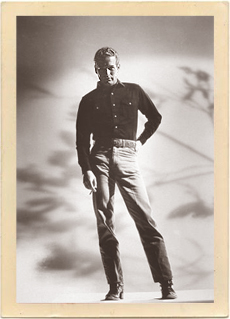 There’s basically nothing here. Go to Claude to soak up the “Hud atmosphere,” but find food and lodging in the Amarillo, Texas area. There’s basically nothing here. Go to Claude to soak up the “Hud atmosphere,” but find food and lodging in the Amarillo, Texas area.Parkview House Bed & Breakfast. 1311 S. Jefferson Street, Amarillo, Texas Parkview House has been lovingly restored by its hosts, Nabil and Carol Dia, who live in and manage this beautiful Victorian Inn. Each room has been decorated using period decor and antique furnishings, most of which have been personally restored by the owners. Choose from the Colonial Room, the French Room, the Victorian Rose Suite, the English Room, the Music Room, or the Cottage. It's charm with all the expected modern day amenities. The property was placed on the National Register of Historic Places in 1992. Texas Roadhouse. 2805 W. Interstate 40, Amarillo, Texas Hand-cut steaks, fall-off-the-bone ribs, made-from-scratch sides, and fresh-baked bread: welcome to Texas Roadhouse! But the food’s not the only thing you’ll find here; there’s plenty of fun to be had from their line dancers and jukebox to the friendly servers. Be sure to try the “rattlesnake bites” and “tater skins.” Right: “Paul Newman is Hud!” That’s what the posters for the movie cried in 1963. Here you see a beautiful photograph of Newman from a photo shoot to promote his starring role as “Hud.” Awards: • Melvin Douglas won an Oscar as Best Supporting Actor. • Patricia Neal won an Oscar as Best Actress. • James Wong Howe won an Oscar for Best Cinematography, Black-and-White. • Paul Newman was nominated for an Academy Award for Best Actor. • Martin Ritt was nominated for an Academy Award for Best Director. • Irving Ravetch and Harriet Frank Jr. were nominated for an Academy Award for Best Writing, Screenplay Based on Material from Another Medium. 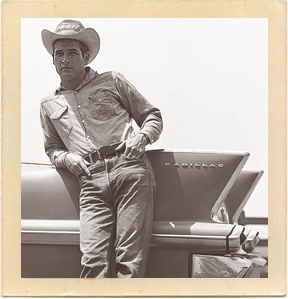 Right: Paul Newman leans against the rear of the Cadillac convertible that he drove in the 1960s classic drama, “Hud.” Right: Paul Newman leans against the rear of the Cadillac convertible that he drove in the 1960s classic drama, “Hud.”Movie Trivia: • Paul Newman played the part of Hud as a villain. He was later stunned that so many young moviegoers had a poster of Hud and viewed him as their hero. • An aficionado of acting, George C. Scott told interviewer Lawrence Grobel (in his December 1980 Playboy magazine interview) that his The Hustler (1961) co-star Paul Newman’s performance in that film was nothing special (both actors were nominated for Academy Awards for their performances). However, he found Newman’s performance as the eponymous Hud (1963) to be a superb piece of acting. • The film is based on the novel, “Horseman, Pass By,” by the award-winning author, Larry McMurtry. • The screenplay was written by the legendary team of Irving Ravetch and Harriet Frank Jr., who had a long-standing work relationship with director, Martin Ritt. They also wrote the screenplays for The Long Hot Summer, Hombre, Conrack, Norma Rae, Murphy’s Romance, and Stanley & Iris, among many others. Character Quote: “I’ve always thought the law was meant to be interpreted in a lenient manner. Sometimes I lean one way and sometimes I lean the other.” ~Hud Bannon (Paul Newman) |
|